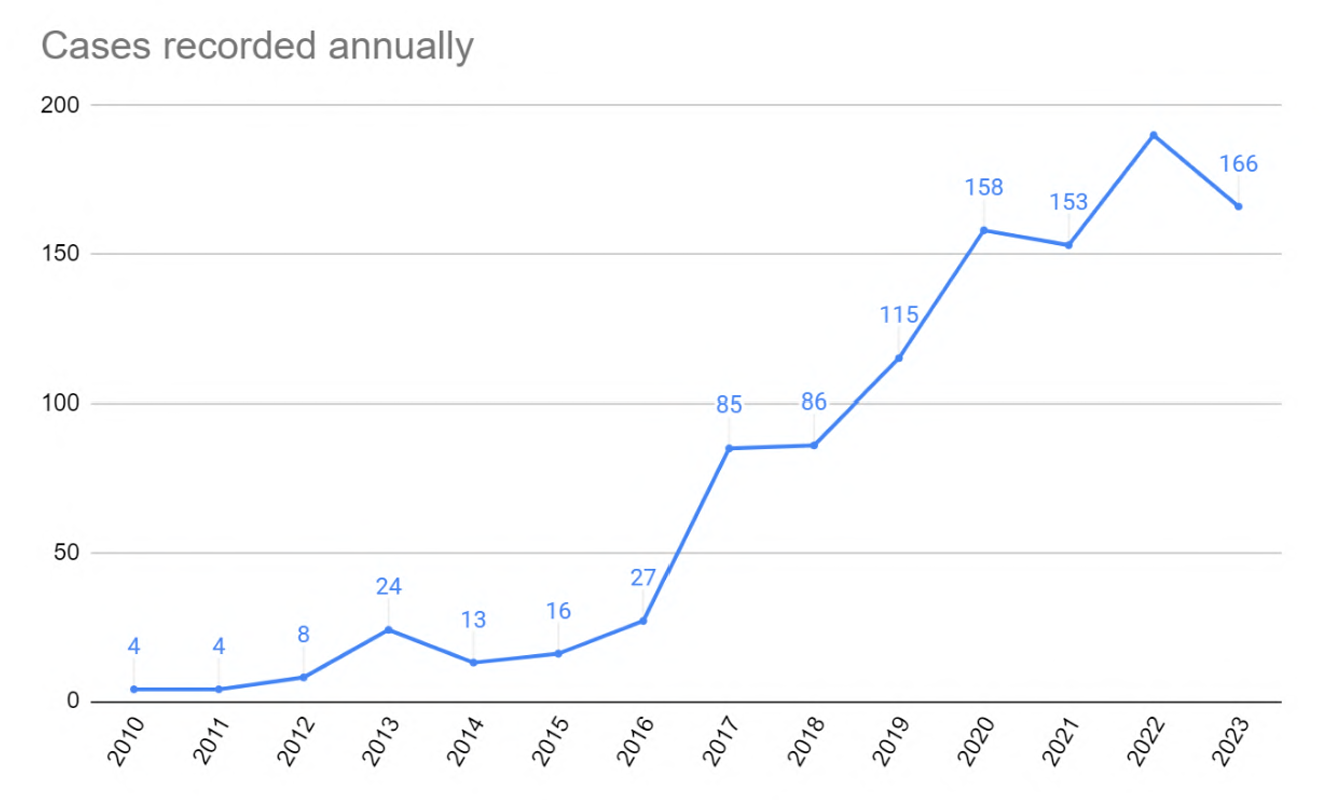Find out more about where, why, and how SLAPPs impact public watchdogs in Europe – and what you can do to help us identify the full scale of the problem.
How to identify a SLAPP
The definition of a SLAPP is simple: it is an abusive lawsuit filed by a private party with the purpose of silencing critical speech. The more difficult question is how you identify this abusive purpose.
The following chart aims to provide you with guidance in both defining and identifying a SLAPP: if your answer to all three questions is “yes”, you’re most likely dealing with a SLAPP:
The key quality that distinguishes SLAPPs (sometimes referred to as “privatised censorship”) from traditional forms of censorship is that they are pressed by private parties rather than state actors. Note, however, that government figures may act in a private capacity when filing lawsuits. Furthermore, in many European jurisdictions it is possible for private parties to trigger or pursue criminal charges against their critics: in the case of criminal defamation laws, in particular, this has proven to be a powerful weapon against public watchdogs.
“Public participation” is a broad term that can encompass any effort to engage in an issue of societal or political significance: journalism, advocacy, whistleblowing, peaceful protest or boycotts, activism, or simply speaking out against the abuse of power.
A number of qualities can provide clues as to the true purpose of the lawsuit. These include the following:
1. Remedies are unusually aggressive or disproportionate
2. Plaintiff engages in procedural manoeuvres designed to drive up costs
3. Plaintiff exploits economic advantage to put pressure on the defendant(s)
4. The lawsuit targets individuals rather than just the organisation they work for
5. The arguments relied upon are legally or factually baseless
6. The plaintiff uses the litigation process to intimidate and harass third-party critics
7. The lawsuit appears to be part of a wider campaign to bully, harass, or intimidate the defendant.
8. The plaintiff has a history of SLAPPs and/or legal intimidation
Many of these are tactics designed to maximise the ability of the lawsuit to intimidate and harass the target. By suing the individual journalist or activist, for example, the SLAPP filer leaves the defendant isolated and exposed — raising the possibility they will be intimidated into silence. For the same reason, SLAPPs often come with demands for excessively high damages, calculated as much to intimidate the defendant as to accurately represent any alleged harm caused.
For more help in deciding whether a lawsuit can be classified as a SLAPPs, see this interactive tool from Index on Censorship: while this is directed at journalists and media organisations, the principles are applicable to all SLAPP targets.
Let us know if you've been the victim of legal bullying
TRACKING THE PROBLEM IN EUROPE
Since 2019 CASE has worked with Amsterdam Law Clinics to catalogue and analyse SLAPP cases across Europe. In March of 2022, CASE published its findings in the form of its report Shutting out Criticism: How SLAPPs Threaten European Democracy, which provided insight into the rising threat of SLAPPs in Europe in such a broad and thorough manner for the first time. An updated report, published in June 2023, identified an additional 200 lawsuits, with 161 of those filed in 2022. The present report found 166 SLAPPs initiated in 2023, alongside 63 additional cases filed in previous years. All in all, SLAPPs continue to rise in Europe with CASE having identified a total of 1,049 in the period 2010-2023.

You can read the full 2024 report here.
Our report is the most comprehensive attempt yet to identify the scale and nature of SLAPPs in Europe. It builds on the work of a number of advocacy groups that have, since the assassination of Daphne Caruana Galizia in 2017, researched the problem of SLAPPs in Europe. They found a striking pattern emerge across the continent: public watchdogs – journalists, newspapers, activists, campaigning organisations, whistleblowers and others – were increasingly being targeted by lawsuits in response to their efforts to hold the powerful to account.

Cases Most
Cases
